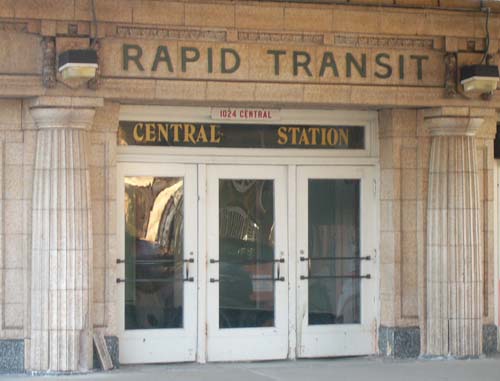A Century of Light Rail in North Evanston
The year 2008 marks 100 years of service between Central St. and Chicago on what is now the "L." In 1907, the Evanston City Council agreed to let the Northwestern Elevated Railroad Co., one of many entities backed by controversial transit magnate Charles Tyson Yerkes, come into Evanston. Evanston had been served since its inception by heavier rail; in fact, ensuring that the Chicago, Milwaukee, and St. Paul Railway would extend its line up the lakefront at least to Evanston was a condition of Northwestern University deciding to locate here. Later, the Chicago & North Western Railway built a competing rail line a little to the west of the C.M.&St.P.
The Northwestern Elevated installed overhead electric trolley wires and ran electric trains from Chicago up to a stop at University Ave. over existing track owned by the C.M.&St.P. The C.M.&St.P. continued to run a steam commuter train on those tracks, but soon gave up trying to compete with the C&NW (which eventually became the still-existing U.P.R.R. North Line of the Metra system).
Back then, the tracks and platform were at ground-level (as they still are on parts of the Brown Line), and a condition of the franchise the City Council granted was that the company elevate the lines in south and downtown Evanston by 1910 (they did). Electrified light rail service was extended from University Ave. north to Central Street at the current location in May, 1908. However, that portion of the line was not elevated; the platform was at ground level. Passengers could also transfer to the Evanston Electric Railway trolley line that ran from downtown Evanston.
In 1912, the Linden stop opened in Wilmette. In 1920, the Evanston City Council ordered the tracks north of University raised; due to financing difficulties in the NERR's successors, that process was delayed 8 years.

CSNA attempts to maintains links to all mass transit maps and schedules -- Metra, CTA, and PACE -- on its Public Transportation page. -- Jeff Smith
Forums:
- Printer-friendly version
- Log in to post comments
